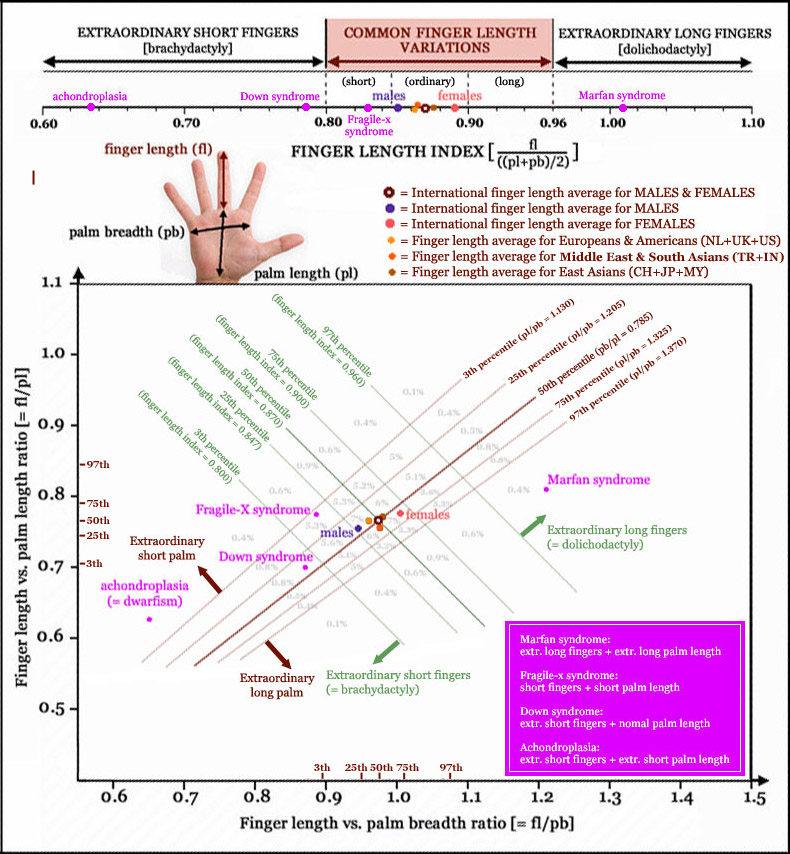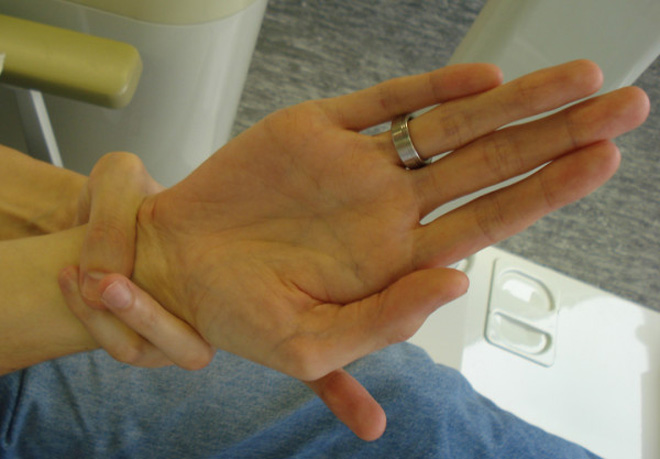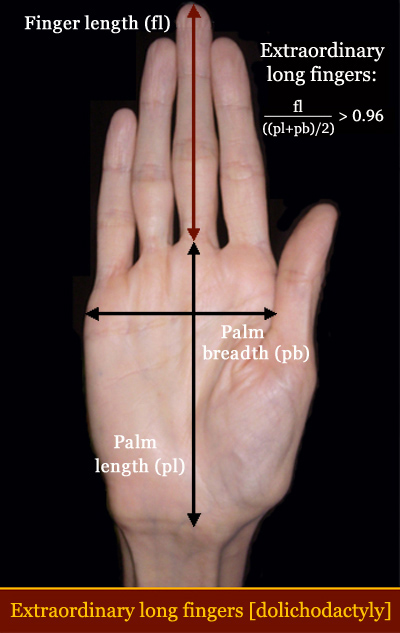|
Long fingers are usually of no concern, as normal finger length is known to vary within a wide range that depends on various factors (including e.g. sexe & ethnicity). However, the condition of extraordinary long fingers - a.k.a. 'dolichodactyly' - may be recognized to represent an important feature of not only genetic syndromes, it also may represent a clue in metabolic diseases, in-utero exposure to teratogenic substances, as well as other miscellaneous conditions. For this reason is 'dolichodactyly' recognized to represent a minor physical anomaly, which refers to group congenital physical conditions (which may sometimes be caused by non-genetic factors) that are usually seen in less than 3% of the normal population. This article presents detailed guidelines for how to recognize extraordinary long finger length, featured with an overview of the most likely associated conditions. * NOTICE: The term 'arachnodactyly' (= extraordinary long, slender fingers) is more well-known due to it's connection with Marfan syndrome; however, it is important to be aware that 'arachnodactyly' has a double requirement regarding the length of fingers + slenderness of fingers - while the term 'dolichodactyly' refers to just extraordinary long fingers in isolation. The term 'leptodactyly' refers to extraordinary slender fingers in isolation. 
Finger length distribution (+ palm length) in international populations, males + females, and various syndromes (Marfan syndrome, Fragile-X syndrome, Down syndrome & achondroplasia/dwarfism): larger picture available HERE. A proper assessment of finger length requires a consideration of the so-called 'finger length index', which concerns the proportion of finger length [FL] relative to the average of palm length & palm breadth [(PL+PB)/2]. Both dimensions of the palm are necessary to avoid that disproportions between palm length [PL] and palm breadth [PB] would result in an unbalanced assessment. When the 'finger length index' is larger than 0.96 (which represents the 97th percentile - see picture above) then finger length can safely be described to represent 'extraordinary long fingers'. Be aware: despite the strong link between abnormal finger length and genetic disorders, abnormal finger length in isolation should not be associated directly with these disorders. Multiple minor physical anomalies (MPA's) are a requirement to make any direct connection between long fingers and any type of disorder at all. About 3% of the general population can be expected to have 'extraordinary long fingers', but females are much more likely to have this characteristics than males. Also, one should be aware of the (small) differences between international populations: East & South Asians (those who are describe to have yellow skin) have a slightly higher chance to meet the criterium, and Europens & Americans (whites) are slightly less likely to meet the criterium. Recently a report was presented about hand features associated with the Big Five personality dimension Extraversion; none of the assessed people in the Dutch student population met the requirement for 'extraordinary long fingers'. However, 7 out of 21 introverts (= 33.3%) do meet the criterium for 'long fingers' (0.90 < finger length index < 0.96), while only 4 out of 27 extraverts (= 14.8%) meet this criterium. Those results indicate that finger lenght could be directly involved in personality, however it appears less likely a factor involved in intelligence - as the percentage of people having 'long fingers' inside this intelligent (student) population can be described to be normal/ordinary. Genetic conditions associated with 'dolichodactyly' (= extraordinary long fingers) are likely more well known for their connection with 'archnodactyly' (= extraordinary long, slender fingers - a.k.a. 'spider fingers') - where the length of the fingers especially becomes manifest in the proportion to palm breadth. The most well-known associated conditions are: Marfan syndrome, Ehlers Danlos Syndrome, Loeys-Dietz syndrome, Beals syndrome, and homocystinuria. 
Extraordinary long finger length in Marfan syndrome: finger length index >> 1.00. Arachnodactyly can be also a feature of Antley-Bixler syndrome, chromosome XYY syndrome, frontometaphyseal dysplasia, ichthyosis syndromes, MEN type 2b syndrome, myotonic dystrophy, nevoid basal cell carcinoma syndrome (Gorline), Rieger syndrome and Sotos syndrome. Arachnodactyly has also been linked to mutations in both fibrillin-1 and fibrillin-2 genes. In very rare cases severe problems with the pituitary gland or thyroid gland may cause acquired extraordinary long fingers. More...
|

